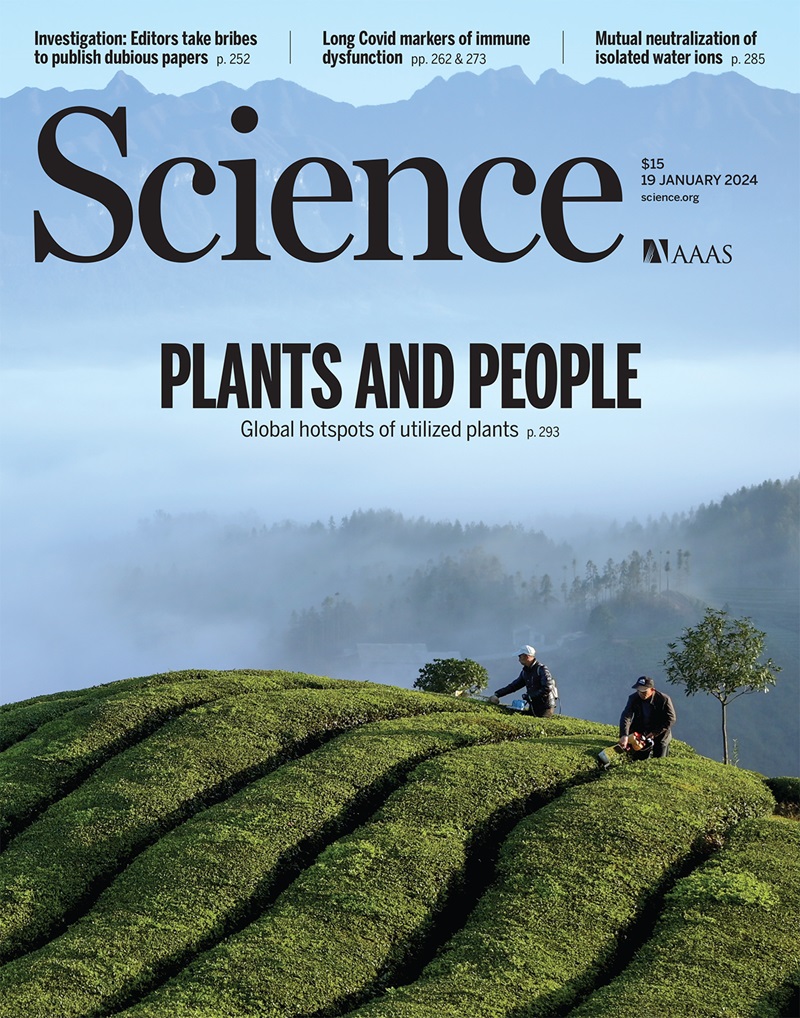Carbonates identified by the Curiosity rover indicate a carbon cycle operated on ancient Mars
IF 44.7
1区 综合性期刊
Q1 MULTIDISCIPLINARY SCIENCES
引用次数: 0
Abstract
Ancient Mars had surface liquid water and a dense carbon dioxide (CO2)–rich atmosphere. Such an atmosphere would interact with crustal rocks, potentially leaving a mineralogical record of its presence. We analyzed the composition of an 89-meter stratigraphic section of Gale crater, Mars, using data collected by the Curiosity rover. An iron carbonate mineral, siderite, occurs in abundances of 4.8 to 10.5 weight %, colocated with highly water-soluble salts. We infer that the siderite formed in water-limited conditions, driven by water-rock reactions and evaporation. Comparison with orbital data indicates that similar strata (deposited globally) sequestered the equivalent of 2.6 to 36 millibar of atmospheric CO2. The presence of iron oxyhydroxides in these deposits indicates that a partially closed carbon cycle on ancient Mars returned some previously sequestered CO2 to the atmosphere.

好奇号火星车发现的碳酸盐表明古代火星上存在碳循环
古代火星表面有液态水和稠密的富含二氧化碳的大气。这样的大气会与地壳岩石相互作用,可能会留下其存在的矿物学记录。我们利用好奇号火星车收集的数据,分析了火星盖尔陨石坑89米地层剖面的成分。一种碳酸铁矿物,菱铁矿,丰度为4.8 - 10.5%,与高水溶性盐共存。我们推测菱铁矿是在水-岩反应和蒸发作用下形成的。与轨道数据的比较表明,类似的地层(全球沉积)封存了相当于2.6至36毫巴的大气二氧化碳。这些沉积物中氧化铁的存在表明,古代火星上部分封闭的碳循环将一些先前被隔离的二氧化碳释放到大气中。
本文章由计算机程序翻译,如有差异,请以英文原文为准。
求助全文
约1分钟内获得全文
求助全文
来源期刊

Science
综合性期刊-综合性期刊
CiteScore
61.10
自引率
0.90%
发文量
0
审稿时长
2.1 months
期刊介绍:
Science is a leading outlet for scientific news, commentary, and cutting-edge research. Through its print and online incarnations, Science reaches an estimated worldwide readership of more than one million. Science’s authorship is global too, and its articles consistently rank among the world's most cited research.
Science serves as a forum for discussion of important issues related to the advancement of science by publishing material on which a consensus has been reached as well as including the presentation of minority or conflicting points of view. Accordingly, all articles published in Science—including editorials, news and comment, and book reviews—are signed and reflect the individual views of the authors and not official points of view adopted by AAAS or the institutions with which the authors are affiliated.
Science seeks to publish those papers that are most influential in their fields or across fields and that will significantly advance scientific understanding. Selected papers should present novel and broadly important data, syntheses, or concepts. They should merit recognition by the wider scientific community and general public provided by publication in Science, beyond that provided by specialty journals. Science welcomes submissions from all fields of science and from any source. The editors are committed to the prompt evaluation and publication of submitted papers while upholding high standards that support reproducibility of published research. Science is published weekly; selected papers are published online ahead of print.
 求助内容:
求助内容: 应助结果提醒方式:
应助结果提醒方式:


